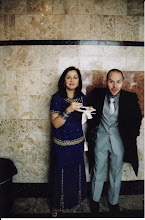We completed the day with an activity in three parts. We completed three variations of Aerial art, each creating the simple message 350, in reference to the safe upper limit in parts per million of CO2 in the atmosphere, to learn more about this important campaign click here.
Here are some images and comments about each activity by the Otis Public Practice MFA's:
#1-OBJECTS:

Gabrielle Erica Levine: "Using a variety of objects (cups, bowls, light bulbs, wood and etc.) within the studio space our group constructed the number 350. The task was interesting by virtue of the limited and random items available in the studio; we succeeded using our communication and collaborative skills."
Carmen Uriarte: "the time constraint is actually helpful for me because I have to think less and act more intuitively."
Ella Tetrault: "It was fun to arrange the objects but it didn't have the same effect as arranging our bodies."
#2-SIGN/HEAD-ON:

We took to the streets for the next two activities. This action involved the composition of a shot using a traditional landscape format. Given the little time we had to complete the picture, the photographer had a clear advantage on the scene. In this case John realized we could use the street sign as a metaphorical link to the urgency of the cause. Overall comments from the class resound that this activity was the least successful.
Ella Tetrault, "I think that it was a good idea to go outside and do it on the traffic island, I felt it made the event seem more important and increased the urgency."
Gabrielle Levine: "The second exercise using signage felt disorganized, but came together quickly. The end result seemed incomplete-- despite the power of words and symbols because their meaning was illusive."
Carmen Uriarte: "most boring and self conscious. felt posed and controlled. like pics at christmas, and thanksgiving, and birthdays, and... you get the idea. uninspiring."
#3- Areal Art:

This activity kept with the tradition of John Quigley's Aerial art though we had 9 participants instead of 900. There was an overall consensus that this activity was the most successful, largely due to its enjoyability and the 'embodying' effect.
Jamie Crooke explains: "I found personally that using my body to be part of the message was the most powerful, and I believe this was because it meant I couldn't just be a by-stander. I was actually physically involved. The next most powerful was the arranging of objects, because we were thrown into a physical task. I wondered what it would have been like to be asked to bring an object, perhaps for a larger cause, to be incorporated into the photo."
Dave Russel: "The most successful piece in my opinion...it was site specific, it communicated a clear message, and it unified the participants, thus creating a feel of collaboration. Everyone needed to participate in order for the piece to work. The other 2 examples did not require equity in the methodology or process."
Carmen Uriarte: "perhaps some of the poses had some spiritual element that had a reverence to them. of course being in someone else's space and being vulnerable as to how you look (vanity) takes a second space to the importance of the goal of the activity and the fact that we were part of a greater whole. it made me think globally while acting locally. who knew. It definitely inspired me to include the same activity in my project at the Norco Mens Prison where I will be teaching painting."
Two themes that seem to have a struck a chord with the participants:
Leadership role/sharing:
Ella Tetrault: "It was interesting to see who becomes an automatic director when doing a project like this."
Jamie Crooke: "I found that in using my body I was also participating without having to make too many choices. By being present and using my body it was easy to be involved. In arranging the objects there was an obligation to interact with others I didn't know, that could be good, depending on the intended outcome of the project. If I was coming to support a cause in a big group I would rather use my body than be thrown into the paradox of choice with others. I did enjoy the problem solving that went along with the arrangement of objects, but it was also a little chaotic."
Carmen Uriarte about activity #1: "lots of multitasking and positioning yourself in a hierarchy but it also was continually repositioning me as leader / follower. sometimes you are suggesting and sometimes you are adding to someone else's ideas. collaboration is a sign of genius. I was nice to not be alone and responsible for the entire outcome. I was just as satisfied and proud to be a part of something together rather than alone. I often am embarrassed when praised because even if you have sole credit there are always people who are behind the scenes who facilitated the final outcome."
The second theme revolved around the idea of Bonding:
Ella Tetrault: "Although we have spent an intense month together as a group I felt like this was a much needed activity in terms of getting to know each other."
Felicia: "Aerial art, though seen from up above, is about bringing it down to the ground and putting people together to put their bodies on the line and make a difference."

